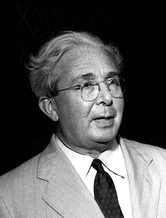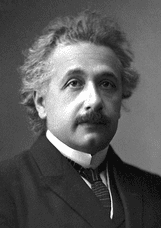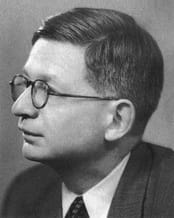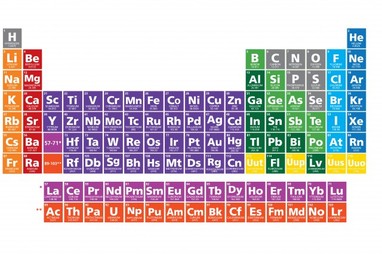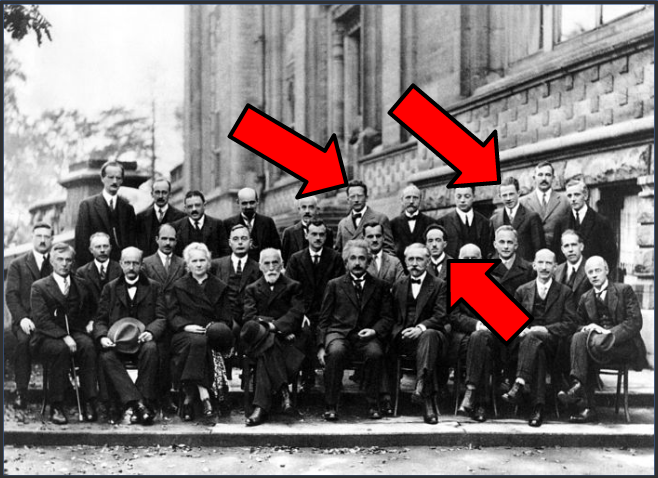Activity 1: How did Germany let its nuclear capabilities slip away before WWII?
Topic 2.1 - The nuclear atom
NOS statement 4.2 - "Science should be open-minded and independent of religion, culture, politics, nationality, age and gender."
|
Time: 10 min.
|
Task: Find out the link between these scientists and how their work related to the title of the activity.
|
Extension: Which international project was organised during the Second World War with the help of these people?
|
References:
Albert Einstein. (2016). Upload.wikimedia.org. Retrieved 28 June 2016, from https://upload.wikimedia.org/wikipedia/commons/5/50/Albert_Einstein_(Nobel).png Leo Szilard. (2016). Upload.wikimedia.org. Retrieved 28 June 2016, from https://upload.wikimedia.org/wikipedia/commons/2/20/Leo_Szilard-cropped.png |
Lise Meitner. (2016). Upload.wikimedia.org. Retrieved 28 June 2016, from https://upload.wikimedia.org/wikipedia/commons/e/e7/Lise_Meitner12crop2.JPG
Rudolf Peierls. (2016). Upload.wikimedia.org. Retrieved 28 June 2016, from https://upload.wikimedia.org/wikipedia/it/8/8b/Sir_Rudolf_Ernst_Peierls.jpg |
Time: 30 min.
Task: The elements 115, 117 and 118 would not have been discovered without the international collaboration of the research centres mentioned. Click on the link to watch the video and then read the following extract from the IUPAC website about the naming of these new elements:
Task: The elements 115, 117 and 118 would not have been discovered without the international collaboration of the research centres mentioned. Click on the link to watch the video and then read the following extract from the IUPAC website about the naming of these new elements:
The collaborative discovery of elements 115, 117, and 118
"The collaboration between the Joint Institute for Nuclear Research in Dubna, Russia; Lawrence Livermore National Laboratory, California, USA; and Oak Ridge National Laboratory, Oak Ridge, Tennessee, USA have fulfilled the criteria for element Z=115, 117 and will be invited to propose permanent names and symbols.
The collaboration between the Joint Institute for Nuclear Research in Dubna, Russia and Lawrence Livermore National Laboratory, California, USA have fulfilled the criteria for element Z=118 and will be invited to propose a permanent name and symbol." (Koppenol, 2002)
"The collaboration between the Joint Institute for Nuclear Research in Dubna, Russia; Lawrence Livermore National Laboratory, California, USA; and Oak Ridge National Laboratory, Oak Ridge, Tennessee, USA have fulfilled the criteria for element Z=115, 117 and will be invited to propose permanent names and symbols.
The collaboration between the Joint Institute for Nuclear Research in Dubna, Russia and Lawrence Livermore National Laboratory, California, USA have fulfilled the criteria for element Z=118 and will be invited to propose a permanent name and symbol." (Koppenol, 2002)
Suggest a name and symbol for each new element in accordance to the IUPAC naming criteria below:
- "The proposed names and symbols will be checked by the Inorganic Chemistry Division of IUPAC for consistency, translatability into other languages, possible prior historic use for other cases, etc. New elements can be named after a mythological concept, a mineral, a place or country, a property or a scientist." (Koppenol, 2002)
- Historic use should be considered which means that the name should fit with similarly placed in the periodic table. E.g. Other large, radioactive elements end with -ium.
References:
IFLScience,. (2016). Chemistry. Retrieved 16 January 2016, from http://www.iflscience.com/categories/chemistry?page=1
Koppenol, W. (2002). Naming of new elements(IUPAC Recommendations 2002). Pure And Applied Chemistry, 74(5). http://dx.doi.org/10.1351/pac200274050787
IFLScience,. (2016). Chemistry. Retrieved 16 January 2016, from http://www.iflscience.com/categories/chemistry?page=1
Koppenol, W. (2002). Naming of new elements(IUPAC Recommendations 2002). Pure And Applied Chemistry, 74(5). http://dx.doi.org/10.1351/pac200274050787
Activity 3: The 5th Solvay Conference
|
Topic 2.1 - The nuclear atom
NOS statement 4.3 - "It is common to work in teams from many disciplines so that different areas of expertise and specializations can contribute to a common goal that is beyond one scientific field."
Time: 5 min.
Task: International collaboration around the field of quantum theory led to significant changes in atomic models. Identify the 3 men highlighted in the photo and find out where they are from.
Why are the majority of the people in the photo male? |
Activity 4 - TOK - Atomic modelling: How do we know?
|
|
Topic 2.1 - The nuclear atom
NOS statement 1.11 - The outcomes of experiments, the insights provided by modelling and observations of the natural world may be used as further evidence for a claim.
Time: 15 min.
Task: Ernest Rutherford was responsible for one of the major progressions in modelling atomic structure. Watch the video until 26:31 then consider the following question.
Which of the 8 ways of knowing (WOK) might have played a role in Rutherford's model? |
The 8 ways of knowing: Language, emotion, sense perception, reason, imagination, faith, memory, intuition.
